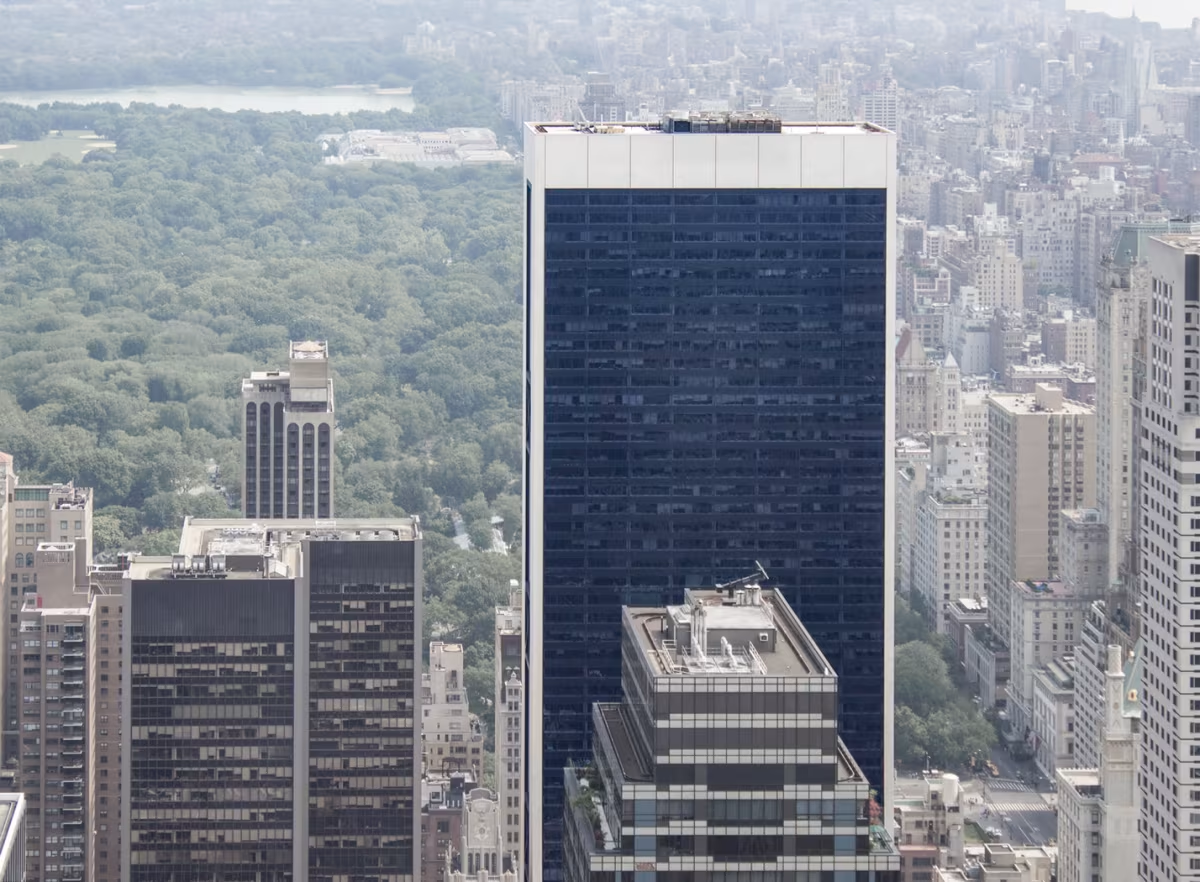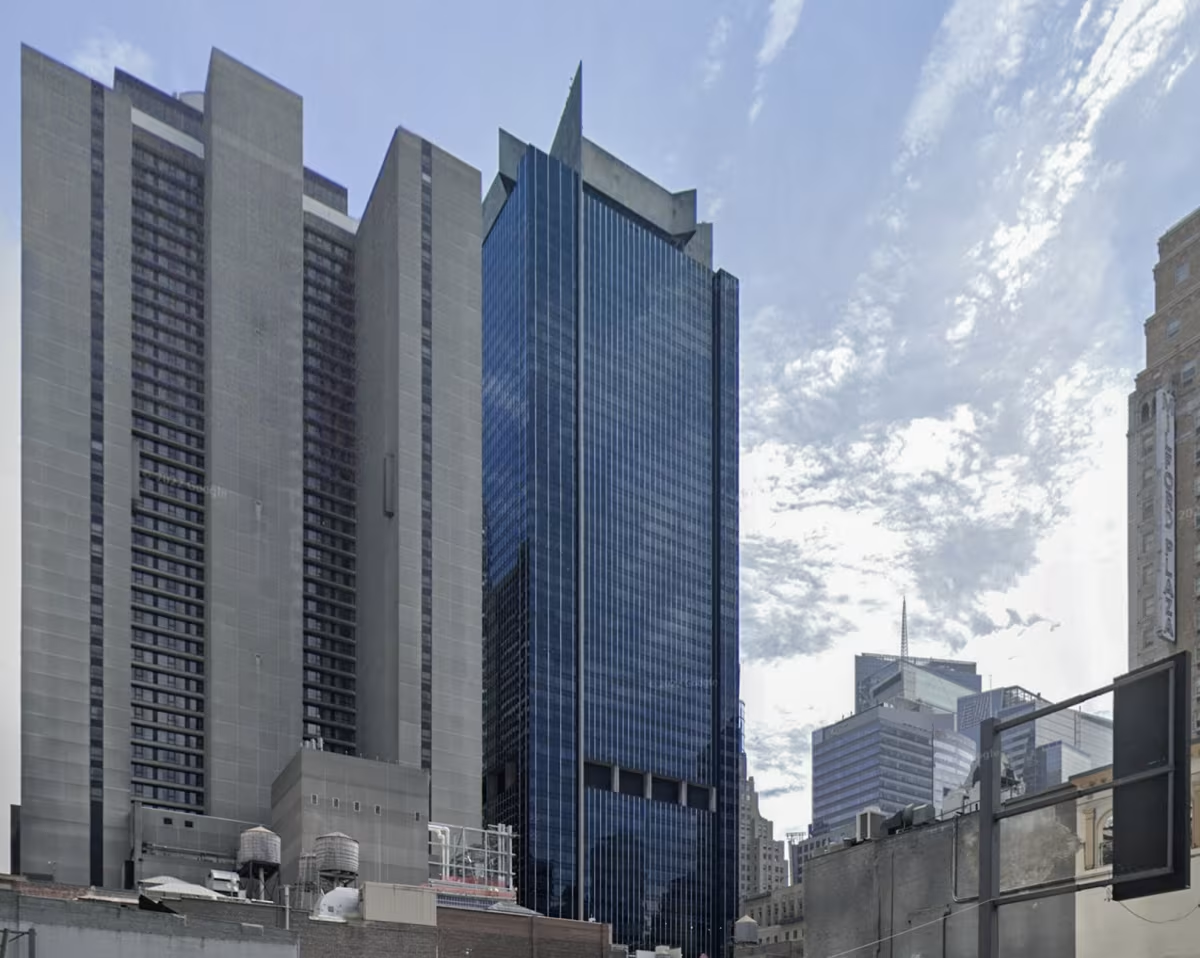Solow Building vs One Astor Plaza


Comparing the Solow Building and the One Astor Plaza is interesting because they both stand in New York, NY, and were completed within 2 years of each other, but they were designed by different architects.
This offers a unique glimpse at how rival designers approached projects in the same city during the same era.
Height & Size
The One Astor Plaza is clearly the larger tower of the two, both in terms of height and number of floors. It rises to 745ft (227m) with 54 floors above ground, while the Solow Building reaches 673ft (205m) with 49 floors above ground.
One Astor Plaza also offers more total built-up area, a total fo 1,926,738 sqf (179,000m2), which is about 383,076 sqf (35,589m2) more than what the Solow Building offers.
Of course, each project may have faced different briefs or regulatory constraints, which we don't really know about and could also explain the outcome.
Architectural Style
Both the Solow Building and the One Astor Plaza were designed in line with the aesthetic conventions of the Modern style.
Both buildings were completed when the Modern style was already past its peak. This makes them feel like late echoes of the movement, more reflective of continuity or nostalgia than of cutting-edge design at the time.
Uses
Both the Solow Building and the One Astor Plaza were designed to serve as commercial towers, and that has remained their main use since their completion, serving similar roles in the urban fabric.
The One Astor Plaza also provides 225 parking spaces.
Structure & Facade
The two towers rely on different structural systems, reflecting distinct engineering strategies.
The Solow Building uses a Trussed Frame structural system, which uses diagonal bracing in addition to beams and columns for stability, while the One Astor Plaza uses a Framed Tube In Tube system, that combines a strong central core with a perimeter tube of columns.
Yet, when it comes to their facade, they both employed the same solution, a Curtain Wall facade.
A curtain wall is a non-load-bearing facade hung from the structural frame. It is anchored to floor slabs and transfers only its own weight and wind loads, allowing for sleek, glassy exteriors.
| Solow Building | One Astor Plaza | |
|---|---|---|
| Skidmore, Owings & Merrill | Architect | Kahn & Jacobs |
| 1968 | Construction Started | 1968 |
| 1974 | Year Completed | 1972 |
| Modern | Architectural Style | Modern |
| Commercial | Current Use | Commercial |
| 49 | Floors Above Ground | 54 |
| 205 m | Height (m) | 227 m |
| 143411 | Built-up Area (m²) | 179000 |
| 34 | Number of Elevators | 36 |
| Trussed Frame | Structure Type | Framed Tube In Tube |
| Steel | Vertical Structure Material | Concrete And Steel |
| Concrete And Steel | Horizontal Structure Material | Concrete And Steel |
| No | Facade Structural? | No |
| Glass, Marble, Aluminium | Main Facade Material | Glass, Stone |
| Solow Development Corporation | Developer | Sam Minskoff & Sons, Inc. |
| Weidlinger Associates | Structural Engineer | Shmerykowsky Consulting Engineers |
| Ivan Chermayeff | Collaborating Artist | Chris Cosma |
| NY | State | NY |
| New York | City | New York |
| 9 West 57th Street | Address | 1515 Broadway |